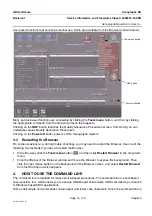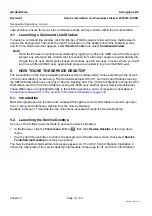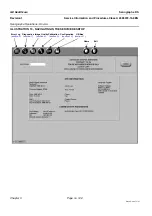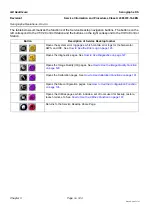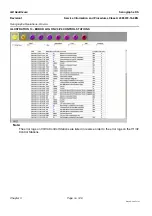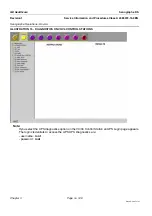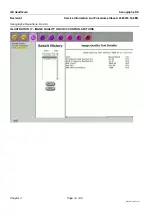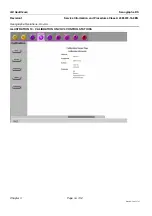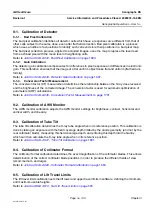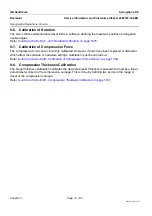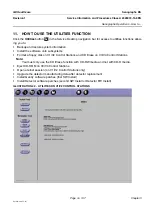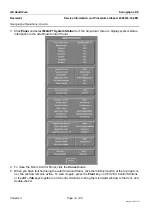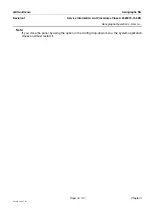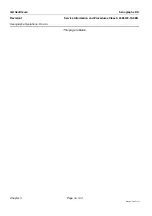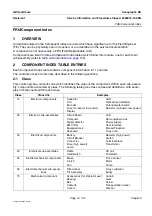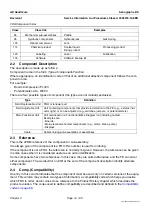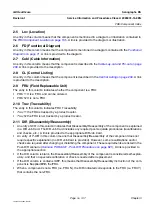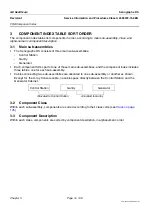
GE Healthcare
Senographe DS
Revision 1
Service Information and Procedures Class A 2385072-16-8EN
Senographe Operations - How to...
Page no. 133
Chapter 3
S2100D How To.fm
9-1. Calibration of Detector
9-1-1.
Bad Pixel Calibration
The bad pixel calibration identifies all detector cells which have a response curve different from that of
other cells subject to the same dose, even after flat field correction. Bad pixel calibration is a process
which uses a number of acquisitions to identify such cells and store their positions in a bad pixel map.
The bad pixel correction process, applied to acquired images, uses the map to replace the level read
from each bad pixel with the mean level of neighboring cells.
Refer to
Job Card CAL A041 - Bad Pixel Calibration
.
9-1-2.
Gain Calibration
The detector gain calibration compensates for differences in pixel response and differences in electronic
gain. This calibration ensures that the image of a flat uniform object looks flat and uniform (flat field uni-
formity).
Refer to
Job Card CAL A043 - Detector Gain Calibration
.
9-1-3.
Conversion Factor Measurement
The conversion factor (CF) measurement determines the relationship between the X-ray dose received
and the brightness of the corrected image. The conversion factor is used for automatic optimization of
parameters (AOP) calculations.
Refer to
Job Card CAL A045 - Conversion Factor Measurement
.
9-2. Calibration of AWS Monitor
The AWS monitor calibration adjusts the AWS monitor settings for brightness, contrast, horizontal and
vertical width, and linearity.
9-3. Calibration of Tube Tilt
The tube tilt calibration determines the X-ray tube angle when in its reference position. This calibration is
done by taking an exposure with the field coverage depth limited by the anode geometry (and not by the
rear collimator blade), measuring this field coverage depth, and entering this depth into the Gantry,
which can then calculate the X-ray tube angle when in its reference position.
Refer to
Job Card CAL A027 - Tube Tilt Calibration
9-4. Calibration of Collimator Format
The collimator format calibration determines the exact magnification of the collimator blades. This allows
determination of the correct collimator blade positions in order to produce the different fields of view
(small, medium, and large).
Refer to
Job Card CAL A029 - Collimator Format Calibration
9-5. Calibration of Lift Travel Limits
The lift travel limits calibration sets the lift lower and upper travel limits in software, defining the minimum,
and maximum usable heights.
Refer to
Job Card ELE A010 - Set Lift Travel Limits
.

